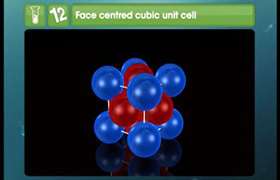CBSE Class 12-science Answered
Alfred Werner theory, a Swiss chemist was the major contributor to devise his ideas about the construction of coordination compounds. He prepared and characterized a great number of ordination compounds and considered their physical and chemical properties behavior by easy experimental method. Werner theory designed the idea of a major valence and a derived valence for a metal ion.
Werner was given the Nobel Prize in 1913 for his work in complexes.
- At least three different cobalt(III) complexes can be isolated when CoCl2 is dissolved in aqueous ammonia and then oxidized by air to the +3 oxidation state. A fourth complex can be made by slightly different techniques. These complexes have different colors and different empirical formulas.
|
CoCl3 6 NH3 |
|
orange-yellow |
|
CoCl3 5 NH3 H2O |
|
red |
|
CoCl3 5 NH3 |
|
purple |
|
CoCl3 4 NH3 |
|
green |
- The reactivity of the ammonia in these complexes has been drastically reduced. By itself, ammonia reacts rapidly with hydrochloric acid to form ammonium chloride.
NH3(aq) + HCl(aq) → NH4+(aq) + Cl-(aq)
These complexes don't react with hydrochloric acid, even at 100oC.
|
CoCl3 6 NH3(aq) + HCl(aq) |
→> |
- Solutions of the Cl- ion react with Ag+ ion to form a white precipitate of AgCl.
Ag+(aq) + Cl-(aq) → AgCl(s)
When excess Ag+ ion is added to solutions of the CoCl3 6 NH3 and CoCl3 5 NH3 H2O complexes, three moles of AgCl are formed for each mole of complex in solution, as might be expected. However, only two of the Cl- ions in the CoCl3 5 NH3 complex and only one of the Cl- ions in CoCl3 4 NH3 can be precipitated with Ag+ ions.
- Measurements of the conductivity of aqueous solutions of these complexes suggest that the CoCl3 6 NH3 and CoCl3 5 NH3 H2O complexes dissociate in water to give a total of four ions. CoCl3 5 NH3dissociates to give three ions, and CoCl3 4 NH3 dissociates to give only two ions.
Werner explained these observations by suggesting that transition-metal ions such as the Co3+ ion have a primary valence and a secondary valence. The primary valence is the number of negative ions needed to satisfy the charge on the metal ion. In each of the cobalt(III) complexes previously described, three Cl- ions are needed to satisfy the primary valence of the Co3+ ion.
The secondary valence is the number of ions of molecules that are coordinated to the metal ion. Werner assumed that the secondary valence of the transition metal in these cobalt(III) complexes is six. The formulas of these compounds can therefore be written as follows.
|
[Co(NH3)63+][Cl-]3 |
|
orange-yellow |
|
[Co(NH3)5(H2O)3+][Cl-]3 |
|
red |
|
[Co(NH3)5Cl2+][Cl-]2 |
|
purple |
|
[Co(NH3)4Cl2+][Cl-] |
|
green |
The cobalt ion is coordinated to a total of six ligands in each complex, which satisfies the secondary valence of this ion. Each complex also has a total of three chloride ions that satisfy the primary valence. Some of the Cl- ions are free to dissociate when the complex dissolves in water. Others are bound to the Co3+ ion and neither dissociate nor react with Ag+.
The [Co(NH3)6]Cl3 complex dissociates in water to give a total of four ions, and all three Cl- ions are free to react with Ag+ ion.
|
|
H2O |
|
|
[Co(NH3)6]Cl3(s) |
→ |
Co(NH3)63+(aq) + 3 Cl-(aq) |
One of the chloride ions is bound to the cobalt in the [Co(NH3)5Cl]Cl2 complex. Only three ions are formed when this compound dissolves in water, and only two Cl- ions are free to precipitate with Ag+ ions.
|
|
H2O |
|
|
[Co(NH3)5Cl][Cl]2(s) |
→ |
Co(NH3)5Cl2+(aq) + 2 Cl-(aq) |
Once again, the three Cl- ions are free to dissociate when [Co(NH3)5(H2O)]Cl3 dissolves in water, and they precipitate when Ag+ions are added to the solution.
|
|
H2O |
|
|
[Co(NH3)5(H2O)]Cl3(s) |
→ |
Co(NH3)5(H2O)3+(aq) + 3 Cl-(aq) |
Two of the chloride ions are bound to the cobalt in [Co(NH3)4Cl2]Cl. Only two ions are formed when this compound dissolves in water, and only one Cl- ion is free to precipitate with Ag+ ions.
|
|
H2O |
|
|
[Co(NH3)4Cl2][Cl](s) |
→ |
Co(NH3)4Cl2+(aq) + Cl-(aq) |
Werner assumed that transition-metal complexes had definite shapes. According to his theory, the ligands in six-coordinate cobalt (III) complexes are oriented toward the corners of an octahedron, as shown in the figure below.






